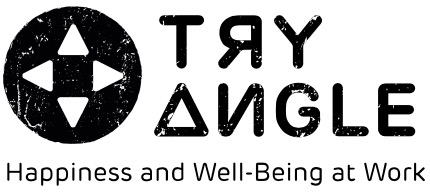From safety and well-being at work to happiness at work
As Belgians, we are world record holders in imposing administrative formalities. This is not a Tryangle statement, but a statement made by Prof. Jan Van Peteghem in an article about prevention in ‘Veiligheidsnieuws’ (‘Safety News’), a trade magazine for prevention advisers.
No real surprise there. In that same magazine, Karolien van Nunnen, from the University of Antwerp, published the results of the comprehensive safety and well-being survey that was carried out in Belgium, featuring some striking figures:
- 74% of Belgian safety and well-being experts believe that there is an excess of administrative obligations.
- 76% consider that there is a need to simplify legislation and regulations on safety and well-being at work.
The sector agrees, the figures prove it and at Tryangle, moreover, we witness it every day in the workplace. So how did it get to this point?
A bit of history: trade unions, safety and health
Just after the war, trade union organisations sowed the very first seeds. Seeds that would later develop into the pillars of the well-being framework. At the time, the first “Committees for Safety, Health and Improvement of the Workplace” were set up in companies with more than fifty employees. The Occupational Safety Act and the General Regulations for Occupational Health and Safety (ARAB) enabled the committees to check whether their company complied with the legislation.
Several adjustments and years later, it was time for renewal. However, it was not a straightforward exercise to transpose European regulations into the Belgian Safety Act of 1952. The ‘safety’ and ‘health’ headings no longer sufficed to classify the new European stipulations. In 1996, the outdated Safety Act was therefore replaced by the new ‘Well-being Act’.
Well-being at work
Very typical for Belgium is that the Well-being Act – the basis for the codex on well-being at work – is in fact not actually a law, but a legislative framework. It includes a clear and broader definition of the term “well-being at work”.
This legislative framework then meant the introduction and implementation of the new terms ‘Well-being, Prevention and Protection’. It is preferable for best practices and objectives to be officially put in writing and laid down in legislation. The legislative character of the well-being policy also requires systems, paperwork, control bodies and new structures. Which is a good thing! After all, this puts the spotlight on this vital topic. We should, however, stay vigilant and make sure that this procedure-oriented legal approach does not lead to an isolated theoretical checklist policy. Especially in a corporate culture that is prone to meetingitis, the well-being policy threatens to get bogged down in endless consultative bodies. And that would be a pity, since there is a great need for an effective well-being policy. A strategic approach that focuses on an integrated approach as well as its implementation at all levels and across all teams within a company.
Negative association with psychosocial well-being
Very often, instead of “psychosocial aspects”, we find the term “psychosocial risks”. Risks to which we almost inevitably link a curative approach. An approach that, given the legislative character of the policy, is based on risk mapping, implementing a reintegration policy and solving the problem when it arises.
The term “psychosocial risks” leads to a negative connotation, an association with disease and weakness, a taboo atmosphere. At the same time, we are stuck in negativity, rules and standards … While we have a deep need for positivity and enthusiasm in our society!
The result? Absenteeism figures are spiralling out of control even though the well-being policy was well defined and widely rolled out, exactly by the book. Because of the disparity between HR and well-being/prevention, the gap between the problem and an adequate solution often grows large.
Forging ahead to work happiness
There is still work to be done in terms of well-being at work. That much is clear. But beware! Before we, as diligent Belgians, start expanding the legislative scope again, we should first contemplate certain aspects. Happiness at work for instance.
Indeed, happiness at work goes a step further than physical, mental or psychosocial well-being. Research shows that a lot of people are not happy at work. Despite the increased attention given to (work) happiness, we see that in Belgium, there is still an important difference between how happy we are at work compared to at home. Our happiness at work scores significantly lower.
A real shame, because we spend a lot of time at work. Happiness at work is also relevant for companies and organisations because happy employees are healthier, more involved, work better together and are more productive.





